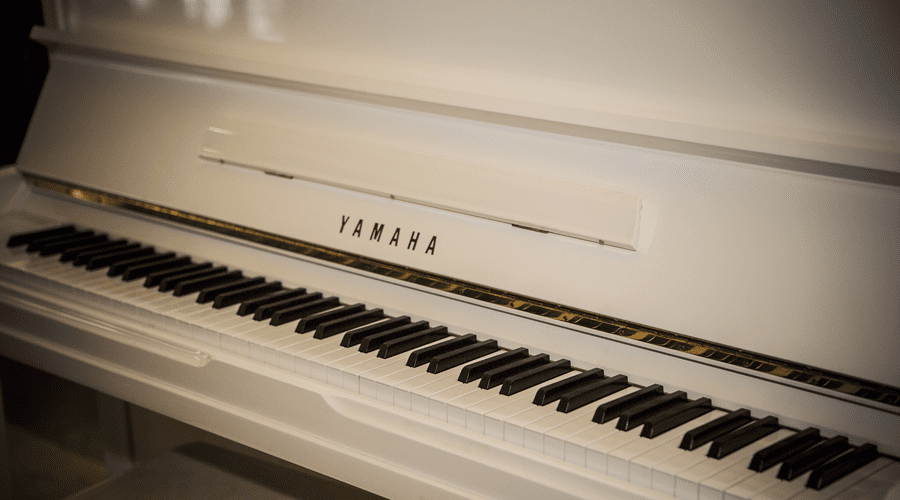A piano is similar to many other instruments in that it is designed to create beautiful sounds that are pleasing to our ears, either standing out during a solo performance or meshing with other melodies in concert, the piano has been a staple of musical artistry since its creation by Bartolomeo Cristofori in the early 1700s. Pianos have come a long way since then in terms of complexity and technical specifications, but the basic premise has remained the same; an instrument that has a more authentic sound than a clavichord, but also allows for much greater control over influential expressive pieces than either the harpsichord or the pipe organ.
The shape and composition of the piano has also remained very similar to its historical ancestor, with the basic keyboard, housing case and lid, pedals, keys, hammers, and strings. With the exception of electric keyboards and certain piano styles, this design has stood the test of time and remained relatively unchanged.
So what makes the piano tick? HOW exactly does it make such beautiful tones and melodies? Let’s take a look at the parts of a piano to see how it all comes together to create one of the most iconic and recognizable sounds in modern music today.
 The Keyboard
The Keyboard
The most obvious part of a piano is the keyboard. This is the part where most interaction between the piano and the pianist takes place. A standard keyboard consists of 88 keys total. 36 of these keys are noticeably shorter and black, sometimes called “enharmonics” or referred to as “sharps” or “flats”. The remaining 52 keys are white, referred to as “naturals”.
These keys are set at different portions and attached to the internal components inside the piano case. Pressing each key creates a different tone by moving the “hammer” which in turn strikes a “string”.
 Housing/Case and Lid
Housing/Case and Lid
This is the largest component of a piano. It houses the entirety of the instrument. Its shape is instantly recognizable. Depending on the type of piano, the housing can be in different shapes and sizes. A common grand piano, for example, is typically larger and has a lid that can be opened which allows for a clearer, resonant tone to emanate from the exposed strings.
An upright piano, however, is typically a little more compact, and while it does have a lid, opening it does less for the tonal resonance than simply moving the piano away from a wall can!
 Hammers and Strings
Hammers and Strings
These parts are the meat-and-potatoes of the instrument. This is where the musical magic happens!
The hammers and strings are located inside the housing, under the lid. The keys themselves are attached to felt-covered hammers. When pressed, the keys act as a sort of fulcrum, pivoting the hammer in a striking motion that impacts the strings. Each string is tightened and tuned for a specific sound, or musical note.
When the hammer strikes the string, it creates a resonant vibration and a clear sound.
Damper
When a key is released, something called a “damper” settles to catch the string and cease the vibration to prevent the sounds from bleeding together and creating a cacophony of uncontrolled noise. The damper is usually made of soft cloth or felt, and helps to mute the vibrating strings to prevent unnecessary or unwanted noise after a string has been struck by a hammer.
The damper sits over the strings, and activates only after a key press is released unless the player is actively using the pedals at the base of the piano.
We’ve got a great video to share with you that explains just how dampers work within the piano.
As cool as that is, dampers don’t work alone. The next part of the piano is an important part of the damper system.
 Pedals
Pedals
Pedals usually come in sets of two or three, depending on the style of piano. These are located at the base of the piano outside of the case, where a person’s feet would normally be while they played. The pedals, from left to right, are the “una corda” or soft pedal, the “sostenuto” pedal, and the “damper” or sustaining pedal. Each of these pedals plays an important role in creating, maintaining, or ending specific musical notes while playing.
Technical Components
We have covered the basics of piano anatomy, but there are many more technical components that make up the inner-workings of the modern piano. These parts range from sets of moving mechanisms all the way to small fittings and bushings. Pianos can have upwards of 12,000 individual parts in all. If you would like more detailed information on some of those individual parts, you can check out this piano glossary for a little more insight into the intricacies of modern pianos.







Thanks for such Details
Very informative details. Thank you.
This is really awesome way to explain. You really know a lot. Thanks for sharing this.
Your hypertext link to the piano glossary does not work.
I had to do some extra googling to deduce the exact definition of the ‘sustenuto’, ‘una corda’ pedals, which translate to ‘sustained’ – where the dampers are lifted to sustain a note and ‘soft passage’ – where the hammer is striking only two of the three strings. So I’m assuming that the leftmost pedal of a three pedalled instrument would be the ‘induced damper’ ?
Tis a shame that glossary is unobtainable.
That said, the video, wouldn’t load to start with, eventually did load and explained all that.
So cool. Learned the basics of piano construction/design. Awesome instrument!